Are you looking to liven up your variety of dishes with green leaves? Well, look no further as microgreens will add that x-factor, intense flavor, and nutritional content to make your dishes stand out!
The microgreen varieties can be grown easily in indoor garden systems at home, particularly in a hydroponics system.
You may wonder about the advantages of cultivating various kinds of microgreens using hydroponics.
Hydroponic systems typically result in faster growth and higher yields during harvest.
Hydroponic gardens offer an ideal setting for cultivating a diverse range of microgreens year-round, free from soil and the threat of snail damage to young plants and greens!
- Related article: What Is the Easiest Plant to Grow Hydroponically
We will examine top hydroponic microgreens for cultivation and offer some helpful advice throughout the process!
1. Broccoli Microgreens
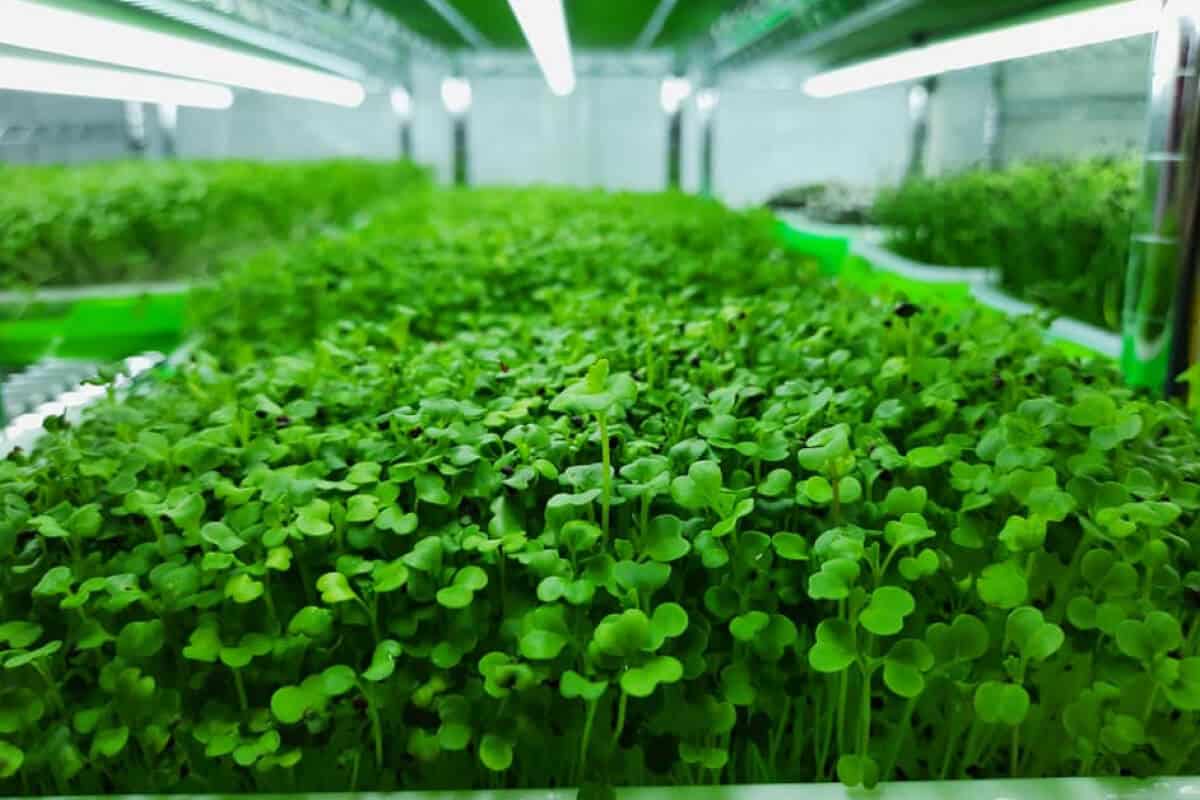
Looking to grow your own hydroponic microgreens at home? Look no further than broccoli microgreens! These speedy little sprouts are perfect for hydroponic systems and will have you harvesting in no time.
Get ready to boost your heart health with this green gem—it’s brimming with vitamin E, a powerhouse nutrient that’s been shown to slash your risk of heart disease!
How Long Does Broccoli Microgreen Take to Grow?
In just a mere 2 days, broccoli microgreens sprout already. Then within 6 to 15 days, they are ready to be harvested and added to your plate.
Temperature and pH Levels
Broccoli is classified as a winter green due to its ability to thrive in colder environments. When growing broccoli microgreens, germination is most successful at 70°F, whereas sprouting broccoli microgreens grow best between 65°F and 70°F.
The optimal pH range for cultivating hydroponic broccoli microgreens is 5.5-6.5 pH.
Tips When Growing or Harvesting Broccoli Microgreen
Broccoli microgreens don’t store well once they have been harvested. It’s best to use them straight after harvesting them.
To harvest broccoli microgreens, you can use sharp scissors or a knife to cut about an inch above the growing medium.
Be careful when harvesting broccoli microgreens—just trim the tops off and leave the plant roots so they can regrow.
2. Cabbage Microgreens
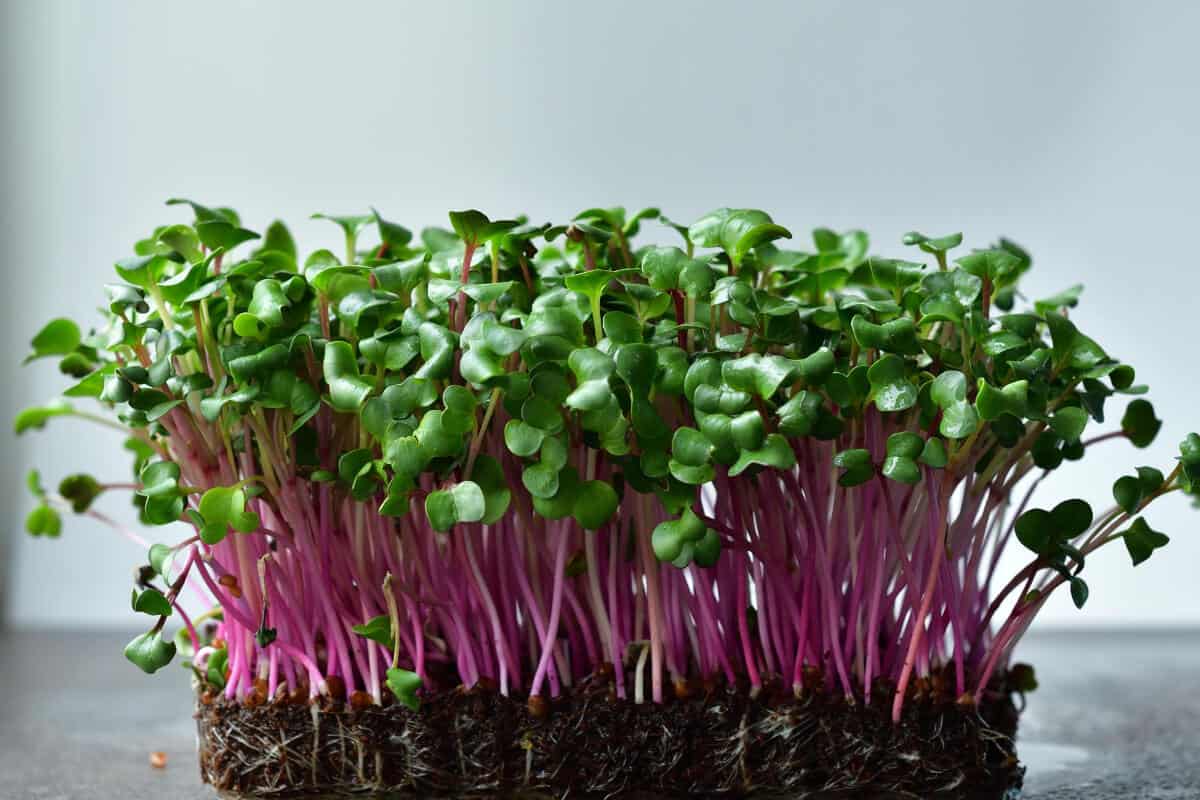
Get ready to indulge in the crisp and flavorful goodness of cabbage microgreens! These greens are suitable for both consumption and hydroponic systems, providing satisfaction and fulfillment!
How Long Does Cabbage Microgreen Take to Grow?
Watch as these tiny powerhouses of nutrients burst forth from their seeds in just 2-3 days, thriving in the hydroponic environment.
In just 5-14 days, you’ll have a harvest of fresh, delicious cabbage microgreens to enjoy!
Temperature and pH Levels
Give your cabbage microgreens the perfect start by keeping their environment between 40°F-80°F for germination and then maintaining a cozy 60°F-70°F for optimum growth.
Unlock the secret to perfect hydroponic cabbage microgreens by cultivating them in water with a pH level that’s just right—neutral to slightly acidic, hovering between 6.5-7.0.
Tips When Growing or Harvesting Cabbage Microgreen
Start to harvest your cabbage microgreens from the 5th day. As cabbage microgreens grow older, they begin to lose their flavor and become bitter.
To harvest cabbage microgreens, use a sharp pair of kitchen scissors. It’s recommended to start harvesting your microgreens before their leaves start growing, which includes trimming the cabbages from their stems.
For optimal preservation, it is advised to keep harvested cabbage microgreens in a cool and dry environment and consume them on the day of harvest if possible.
3. Cress Microgreens
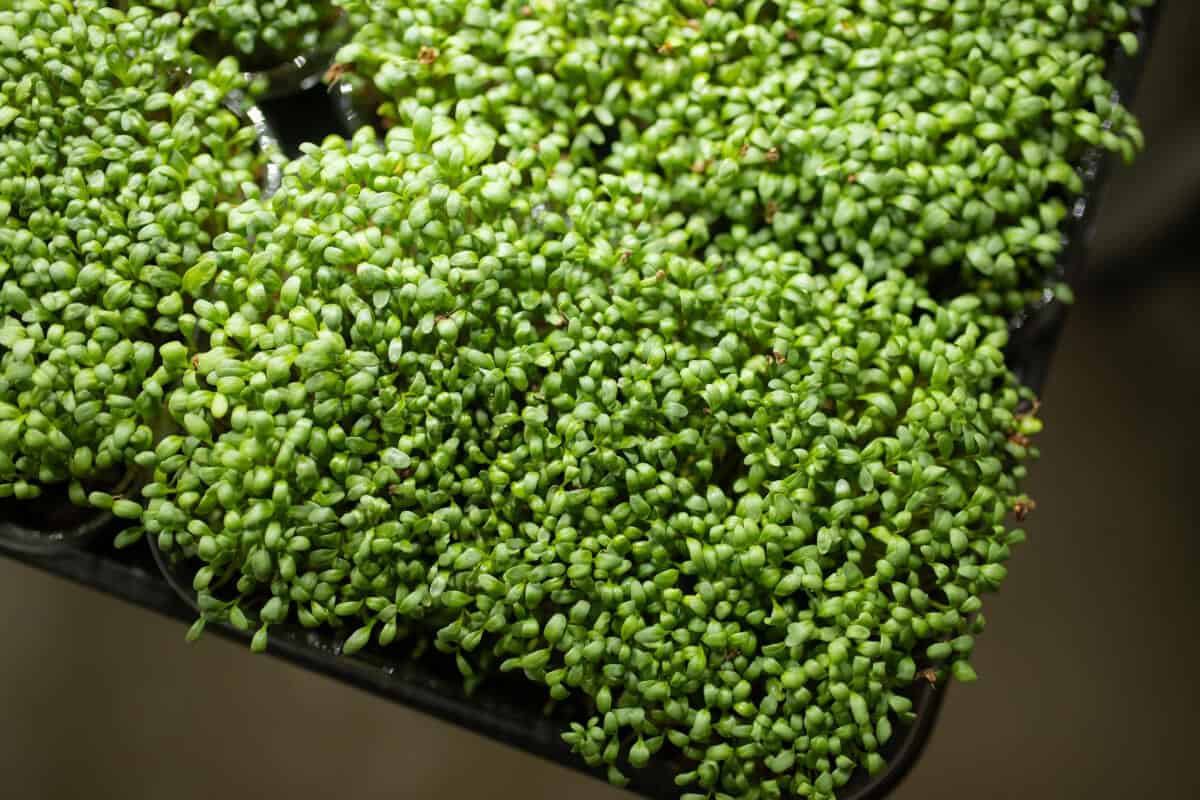
Spice up your taste buds with hydroponic cress microgreens! These tiny powerhouses pack a punch of peppery flavor that will take your meals to the next level.
How Long Does Cress Microgreen Take to Grow?
Watch your microgreens sprout and thrive in no time! With hydroponic cress leading the pack, expect germination within just 3-4 days and harvestable greens in less than 2 weeks!
It’s best to use Coco Coir as the growing medium, for growing hydroponic cress. Coco Coir helps regulate the levels of moisture in your hydroponic system and prevents mold from building.
Temperature and pH Levels
Microgreens grow best between 65°F to 75°F, with ideal germination at 70°F.
Keep your hydroponic system cool to ward off pesky diseases from infecting your beloved microgreens—aim for a temperature below 75°F!
Cress loves shaded areas and grows well at lower temperatures. The recommended growing temperature for hydroponic cress is 45°F.
Cress microgreen seeds need a temperature range of 55°F-70°F for best germination.
Get the perfect hydroponic cress by maintaining a pH level of 5.5-6.5 in your water. And guess what? The sweet spot is right at 6.0!
Tips When Growing or Harvesting Cress Microgreen
Say goodbye to dirt in your cress microgreens! With a hydroponic system, you can enjoy the benefits of soil-free cuttings.
To ensure a bountiful harvest of microgreens, handle them with care and delicately snip away without disturbing the precious roots.
Say goodbye to your cress substrate once harvesting’s done—the cress won’t come back to life, so it’s safe to say farewell!
4. Baby Butter Lettuce Microgreens
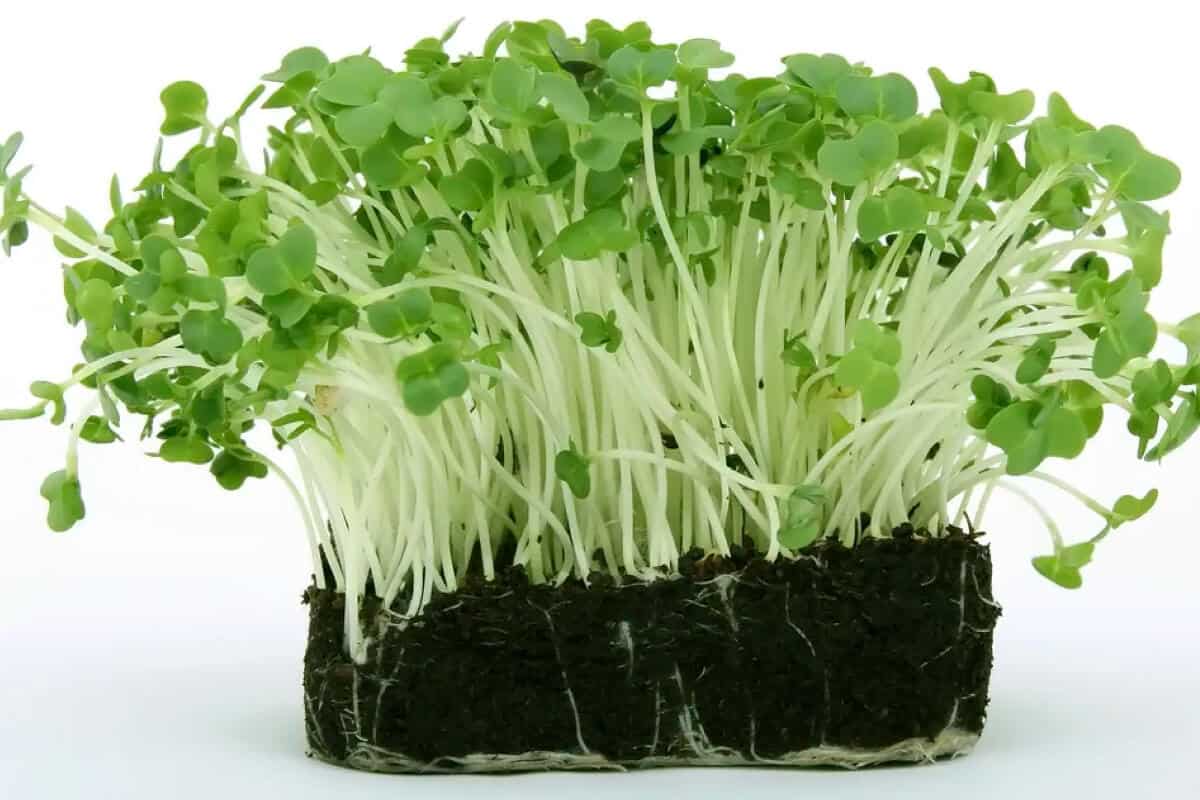
Growing your own hydroponic baby butter lettuce microgreens is easier than it looks. Naturally, baby butter lettuce is a smaller species of lettuce, making its microgreens the perfect fit for a hydroponic microgreen system.
How Long Does Baby Butter Lettuce Microgreen Take to Grow?
The germination process of baby butter lettuce, like most microgreens, typically takes 1-3 days. You can expect to start harvesting your baby butter lettuce microgreens within 8 days.
Temperature and pH Levels
Unleash the full potential of your plants by keeping your indoor grow room at the sweet spot of 65°F-75°F, while basking your outdoor greenery in a cozy shaded spot with just the right amount of sunshine.
Get your hydroponic system thriving with water that’s at the perfect pH level of 6.0-6.5!
Tips When Growing or Harvesting Baby Butter Lettuce Microgreen
The best-growing medium for baby butter lettuce microgreens is Coco Coir because it keeps in its moisture. When germinating your hydroponic baby butter lettuce seeds, keep them in the dark until they sprout.
When it comes to harvesting your microgreens, you will notice the leaves form from your seedlings. When cutting your microgreens, use a pair of scissors, and be careful not to cut off any Coco Coir with your leaves.
5. Pea Microgreens
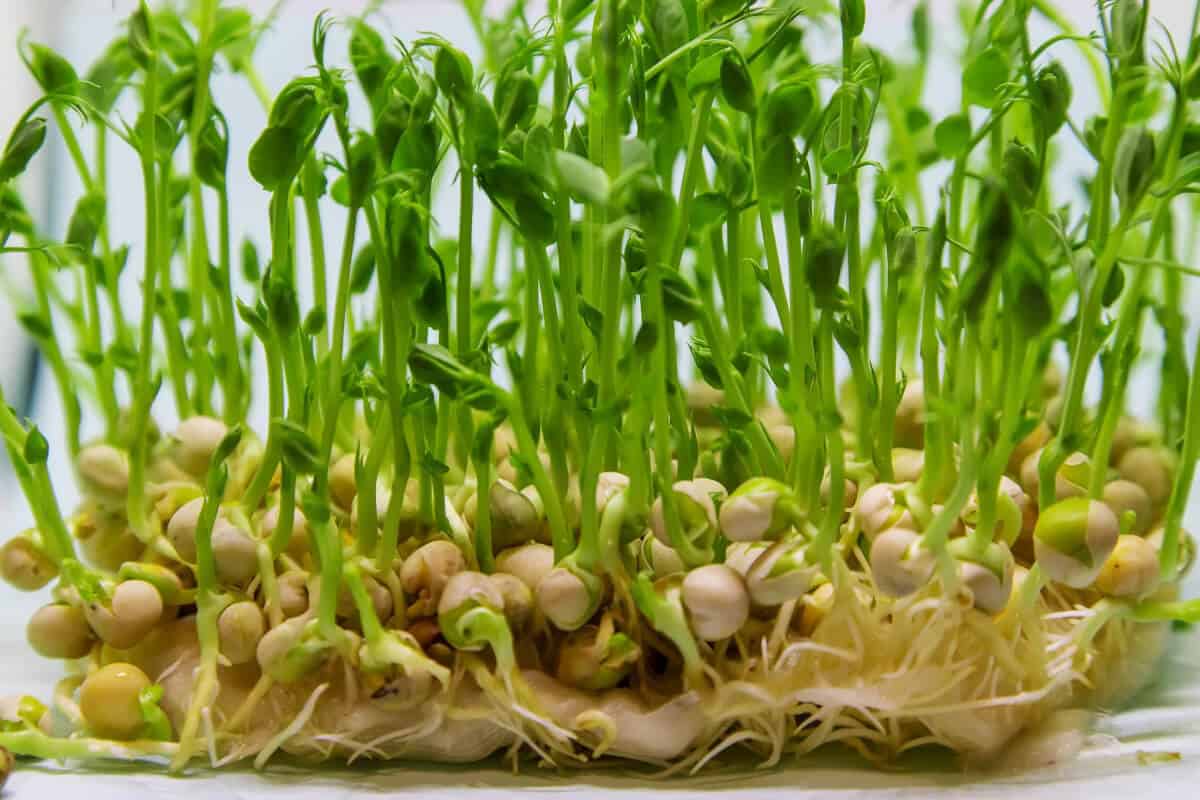
These are not your average garden peas as peas microgreens grow extremely effectively in hydroponics, plus they can regrow after their harvest.
How Long Does Pea Microgreen Take to Grow?
Hydroponic pea microgreens can reach harvest within 6-14 days after being seeded. Prior to being exposed to light, the pea seeds require around 2-4 days for germination in darkness.
Temperature and pH Levels
The secret to flourishing microgreen peas lies in the optimal temperature range of 55°F-70°F, with germination kicking off at the cool and crisp temperatures of 55°F-65°F.
Achieving the ideal pH balance is crucial for the flourishing of hydroponic pea microgreens, especially when you want to preserve that precious moisture in the substrate.
It is also recommended to keep the pH level between 5.5-6.5 for the best growth results.
Tips When Growing or Harvesting Pea Microgreen
Pea microgreens can be harvested at two different stages. If you prefer sweeter and tender pea microgreens, then you will have to harvest your microgreens before they begin to turn into pea shoots.
You can always harvest some pea microgreens and the ones that you don’t need can be harvested as pea shoots. You can generally begin to harvest your pea shoots when they are 3-4 inches tall.
Always use a sharp pair of scissors or gardening shears and be careful. Pea microgreens will resprout so be sure to be gentle when you are harvesting your microgreens, and don’t pull the roots out.
6. Kale Microgreens
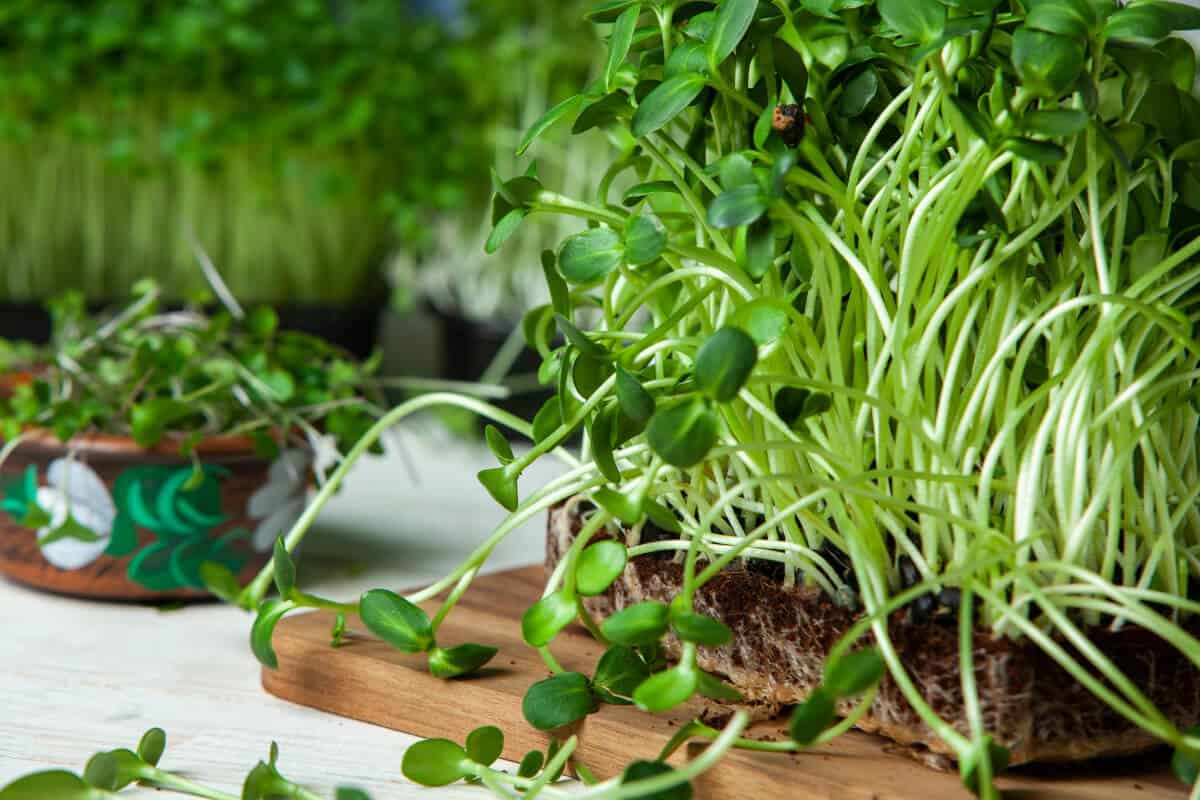
You’d be surprised to find out that Kale greens can be grown as a microgreen. Hydroponic kale microgreens are just miniature versions of their adult counterpart but with a sweeter taste.
How Long Does Kale Microgreen Take to Grow?
Discover the speedy secrets of kale microgreens—these hydroponic wonders can germinate in just 2 days and be ready for harvest in as little as 8-10 days!
Temperature and pH Levels
Generally, the recommended temperature for microgreens remains the same. These beauties thrive in the sweet spot of 60°F-75°F, where they grow with ease and grace.
Let your kale seeds bask in a little shade at first, then shower them with a minimum of 6 hours of sunshine each day to watch them flourish!
The pH levels recommended for growing hydroponic kale microgreens are typically lower than other microgreens. The water should be kept within a range of 6.0-7.0.
Tips When Growing or Harvesting Kale Microgreen
Harvesting kale microgreens should take place within 10 days from germination. When harvesting your kale microgreens, cut your sprouts at a ½ angle, then cut halfway between your growing medium and the leaves.
For optimal results, it’s recommended to use sharp scissors when cutting microgreens, particularly kale. Once cut, store them in a dry area and refrain from rinsing them to prolong their shelf life.
7. Arugula Microgreens
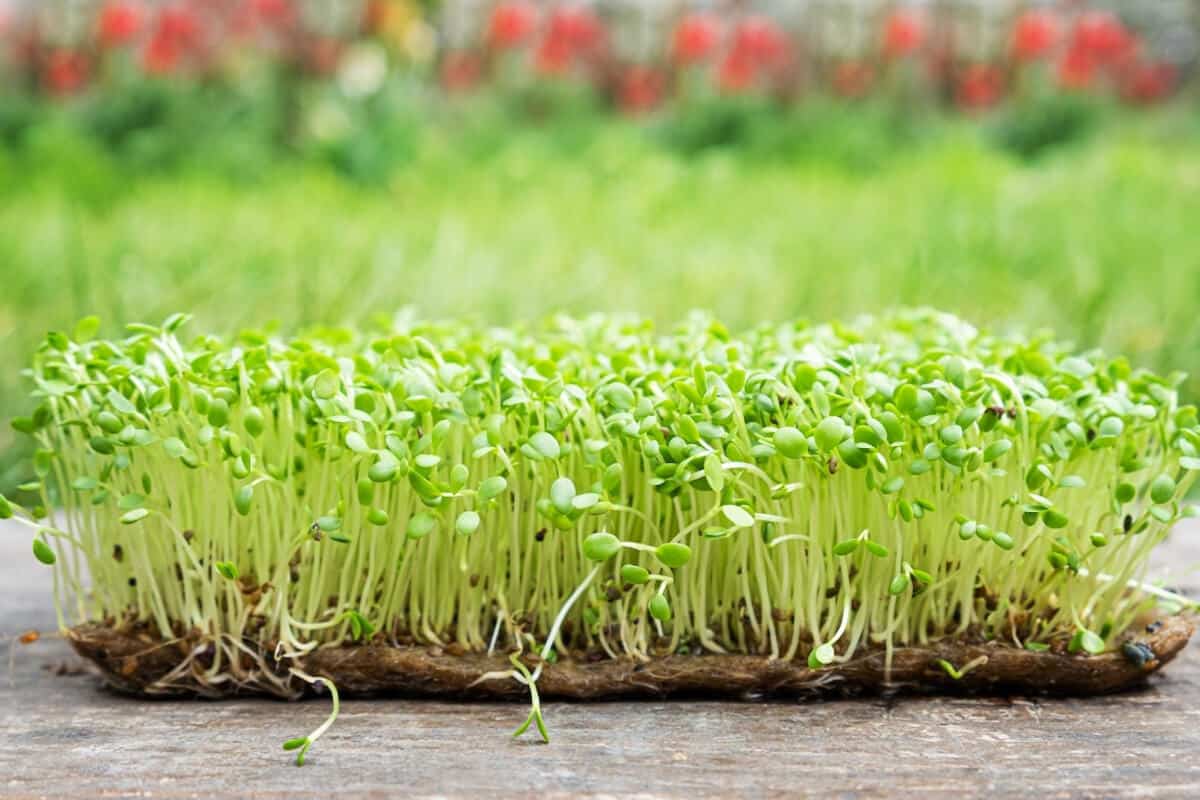
An increasingly popular microgreen for chefs these days—is Arugula. This microgreen provides nutty flavors, plus it’s also a fast-growing microgreen in a hydroponic system.
How Long Does Arugula Microgreen Take to Grow?
The harvesting of arugula microgreens usually occurs between 10 to 12 days after planting.
Temperature and pH Levels
This leafy green loves to grow hydroponically in cooler temperatures, hitting its peak potential between 45°F to 65°F.
Get your arugula to thrive by giving it just the right pH level—shoot for 6.0-7.5, with a preference for water that’s gentle and neutral.
Tips When Growing or Harvesting Arugula Microgreen
Arugula will root within 2 days. Its seeds will often send out hundreds of tiny root hairs but don’t mistake this for mold.
When harvesting your arugula microgreens, try to avoid washing them off. Cut your microgreens about a quarter of their length from their roots using a sharp pair of scissors.
Store your microgreens in a cool, dry environment and only harvest what you need. Arugula microgreens don’t have a long shelf life and must be consumed within 2 days.
8. Basil Microgreens
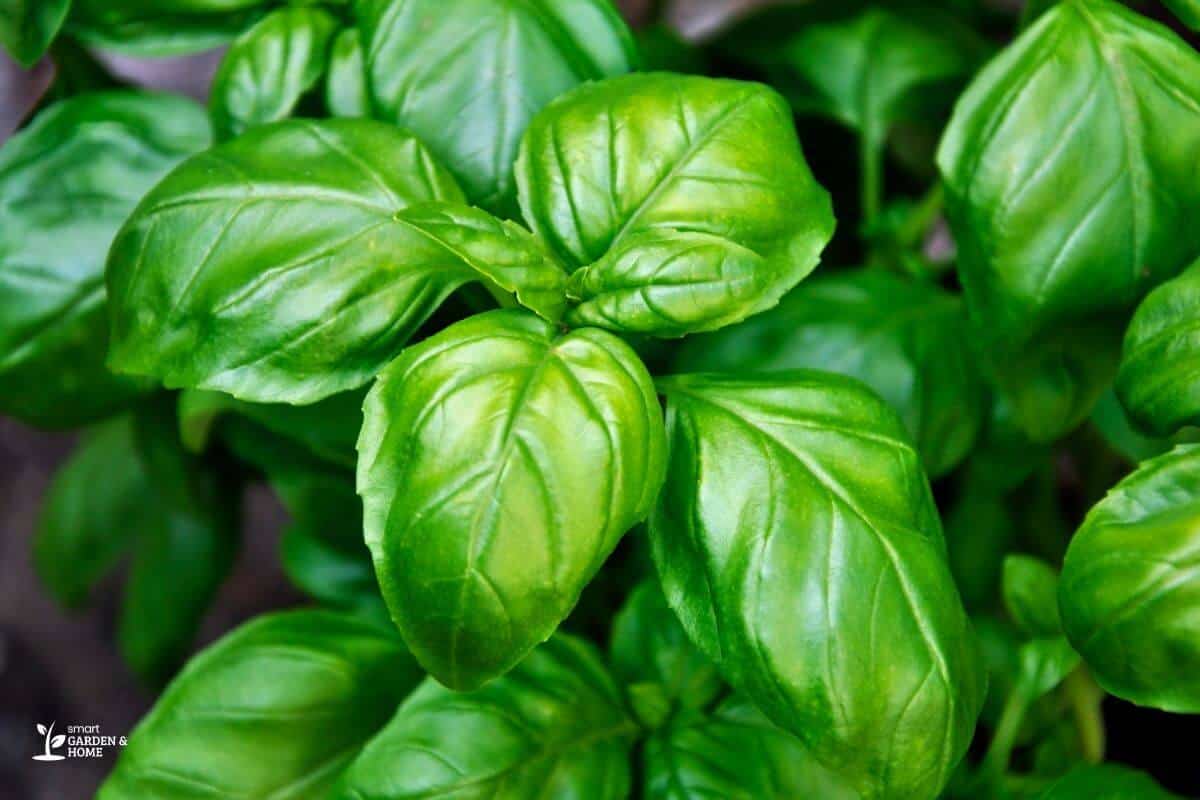
Basil microgreens are the younger versions of basil plants and they provide a unique flavor to dishes. This particular herb is commonly used in home hydroponic systems.
How Long Does Basil Microgreen Take to Grow?
In just a mere 7 to 14 days, your basil microgreens will be ready to pluck and savor in all their luscious glory!
Temperature and pH Levels
The ideal temperature for growing basil microgreens is around 70°F, with a pH level between 6.0-6.5.
Tips When Growing or Harvesting Basil Microgreen
When harvesting your basil microgreens, avoid using wet scissors as it can lead to mold growth in the future.
Cut your basil microgreens at their base, leaving about 1/4 inch of the stem behind so that it can regrow in the future.
Store your harvested basil microgreens in a cool, dry area and consume them within 2 days since they don’t have a long shelf life.
9. Swiss Chard Microgreens
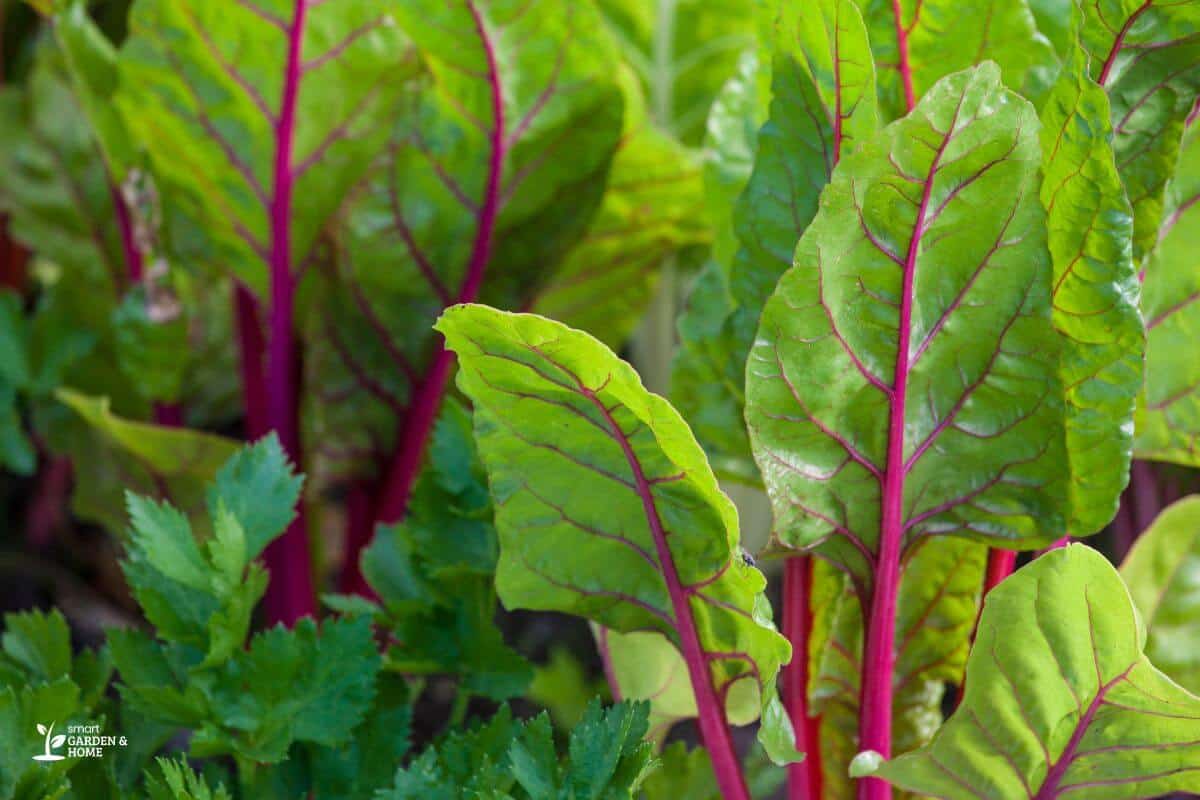
Get your daily dose of nutrients with Swiss Chard, the leafy green that’s bursting with flavor and versatility in the kitchen.
Transform your meals with vibrant and flavorful Swiss Chard microgreens! Elevate the taste and presentation of your sweet dishes, salads, and sandwiches with this versatile ingredient.
How Long Does Swiss Chard Microgreen Take to Grow?
Watch these vibrant Swiss Chard microgreens grow from seed to harvest in just 10-14 days, bursting with flavor and nutrients!
Temperature and pH Levels
The ideal temperature for growing Swiss Chard microgreens is around 70°F, with a pH level between 6.0-6.5.
Tips When Growing or Harvesting Swiss Chard Microgreen
To prevent mold growth in the future, it is recommended to avoid using wet scissors when harvesting Swiss Chard microgreens.
When harvesting Swiss Chard microgreens, it is recommended to cut them at the base, leaving a 1/4-inch stem to ensure regrowth.
Don’t let your Swiss Chard microgreens wilt away! Keep them fresh and crunchy by storing them in a chill spot and munching on them within 48 hours.
Best Growing Medium for Hydroponic Microgreens
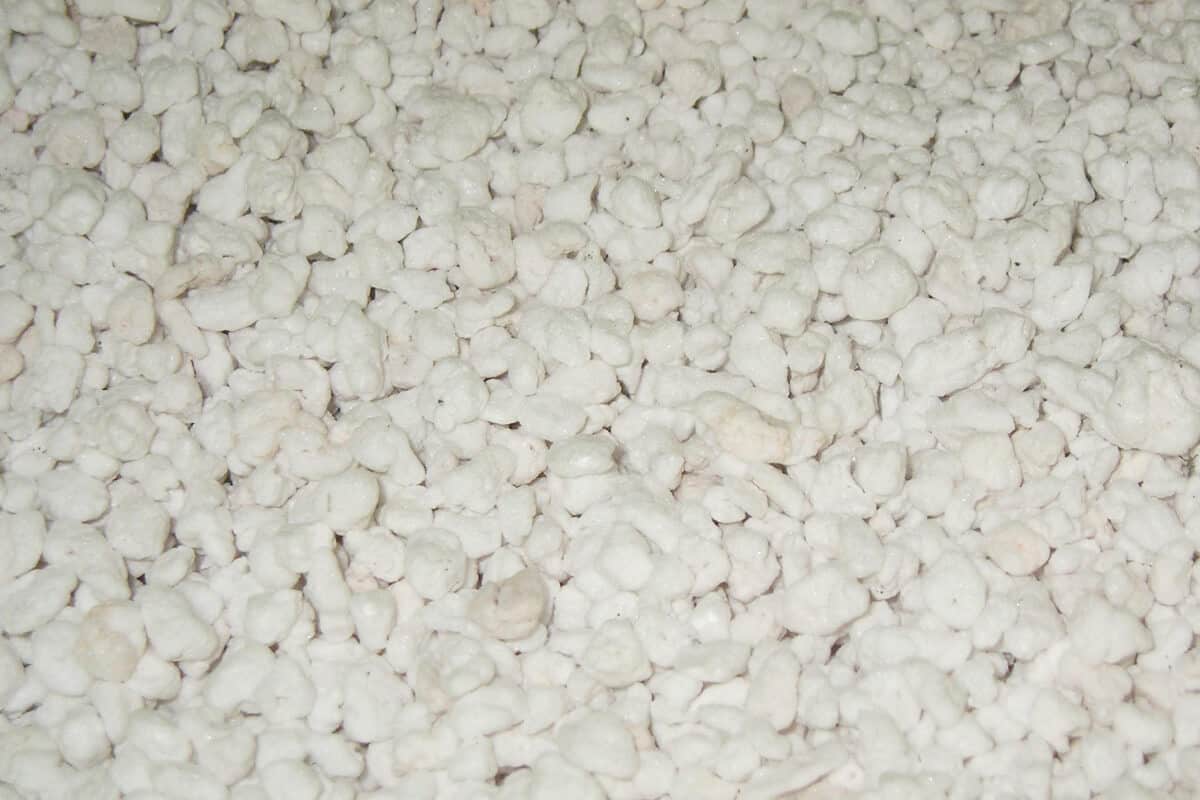
The best-growing medium for growing hydroponic microgreens is dependent on which microgreen is being cultivated.
However, the 3 most preferred growing mediums for hydroponic microgreens are Perlite, Coconut Coir, and Vermiculite.
These growing mediums provide a stable base for rooting microgreens. Other growing mediums such as Clay Pellets and Jiffy Plugs are not suitable for hydroponically growing microgreens.
Microgreens Trays
Microgreen trays are types of hydroponic systems used for growing microgreens, available in different designs like plastic, germination, shallow, 12-hole, and 4-hole trays.
The tray’s genius design lets water flow through, giving your microgreens a boost of health and nutrition!
The tray also provides an even surface for planting seeds, which ensures that each plant receives the same amount of light and water.
Finally, the tray’s design allows for easy harvesting and clean-up.
Microgreens Kit
Microgreen kits are specifically designed for growing microgreens in a hydroponic system.
The kits provide everything you need to get started, including a molded seed tray with drainage holes, a growing medium, and seeds.
Additionally, the kits come with easy-to-follow instructions on seed soaking, harvesting, and more, which make planting microgreens for beginners easy to get started.
Do Hydroponic Microgreens Need Fertilizer?
Hydroponic germinated microgreen seeds do not need fertilizer to develop.
As the microgreens plants get older, providing them with their needed nutrient levels will increase their growth and result in better yields.
Can all Microgreens Be Grown Without Soil?
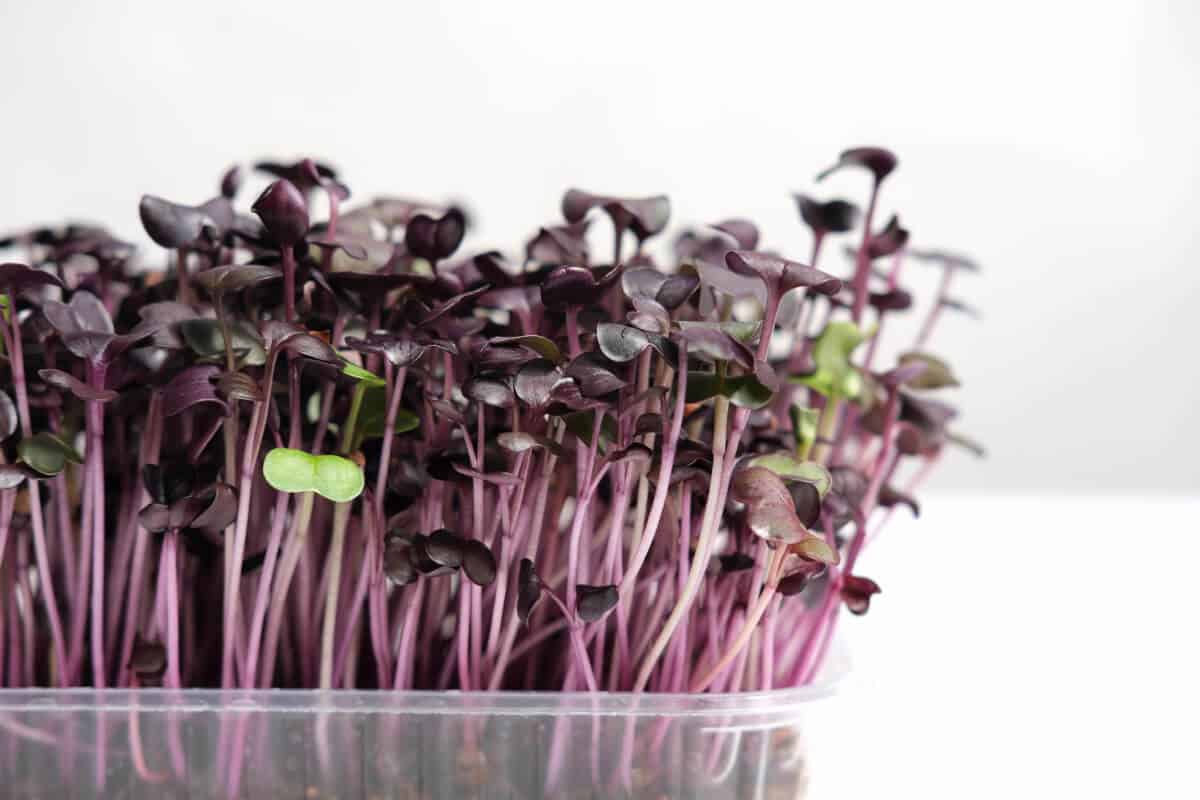
These vibrant microgreens are harvested at an early stage and can be grown through hydroponic systems. Additionally, some of these microgreens are just begging to be cultivated hydroponically!
Hydroponic systems involve growing plants without soil, using a solution with specific water levels and nutrient content.
Final Thoughts on Hydroponic Microgreens
Revolutionize your cuisine with vibrant and nutrient-packed hydroponic microgreens—the ultimate source of fresh and delectable salad and vegetable greens that will take your dishes from ordinary to extraordinary!
Finding the best microgreens for your taste and health needs may require some effort, but you can discover them through exploration and experimentation!
We’ve uncovered the top 9 hydroponic microgreens that will have your taste buds dancing with delight.
From the peppery punch of arugula to the hearty goodness of broccoli and kale, these fresh and vibrant varieties are sure to satisfy your inner foodie!
We’ve also shared some tips on how to grow them successfully—using the right grow medium, proper lighting and temperature, humidity levels, adjustments of water, and harvesting them during their true leaf stage.
By following these tips and choosing the right microgreens, you and your green thumb can enjoy the health benefits of microgreens—boost your nutrient intake and fresh, flavorful, aromatic greens—all year round!
Check out these articles to learn more about growing hydroponic plants:

